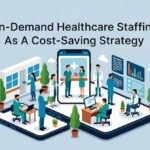Around 12 million Americans are enrolled in both Medicare and Medicare—and many dual-enrolled individuals are not receiving the care they need as a result—as reported recently by independent health policy research organization, KFF. The problem is caused by a failure to smoothly integrate the two systems, thus leading to fragmented care, higher costs, and poor health outcomes. As a result of the healthcare gap, both federal and state lawmakers are working to develop, test, and implement a myriad of coverage and financing options to aid some of the most vulnerable members of the population.
Why the Overlap?
It is easy to see how Medicare and Medicare can overlap in many cases. Medicaid covers people with limited income and resources, while Medicare covers disabled people and those aged 65. Many people living with disabilities and seniors have lower income and resources. As reported by the organization, Disability Compendium, there is a sizeable poverty gap in the U.S. To be precise, poverty affects around 11.4% of people without disabilities, and 25.9% of people with disabilities. Meanwhile, around one in three older adults are economically insecure, with incomes below 200% of the federal poverty level—as stated by the National Council on Aging.
Key Takeaways from the KFF Report
The KFF research showed that three in ten dual-eligible individuals are enrolled in a dual-eligible Medicare plan, with most having coordination-only dual eligible special needs plans. These plans must be coordinated with state Medicaid programs. Meanwhile, the enrollment of dual-eligible people in traditional Medicare plans ranges from 30% in states like Hawaii, to 70% or higher in numerous states (including North Dakota, Wyoming, and Maryland).
Challenges Faced by Dual-Eligible People
Individuals who are dual-eligible often face more challenges than their non-disabled counterparts. Some of the most pressing of these issues include having a physical or mental condition, being part of a racial or ethnic minority, and earning a low income. All these factor can make it harder to understand and navigate the complex healthcare system.
Complex and disparate rules in the Medicare and Medicaid systems can lead to greater fragmentation and, ultimately, to patients not getting the care they require. Policymakers are therefore proposing that the role of Medicare Advantage plans be expanded, so that the problem of fragmentation can be reduced or eliminated.
The healthcare gap for dual-enrolled individuals is a pressing issue that demands prompt attention and effective solutions. As federal and state lawmakers collaborate to develop and implement various coverage and financing options, it is essential to prioritize the integration of Medicare and Medicaid systems, streamlining coordination and reducing complexities.
By fostering a more cohesive healthcare approach and expanding the reach of Medicare Advantage plans, government can pave the way towards a future where all Americans, regardless of income, age, or ability, receive the quality care they deserve.
Read Also
- Creative Approaches to Alleviating Healthcare Staff ShortagesHospitals and clinics are facing staff shortages, which makes it harder to take care of patients well. Finding simple and useful solutions is very important. Easy changes like flexible work hours, good training, and chances to grow can help staff stay happy. Technology, like online doctor visits and helpful tools, can make work easier. Smart… Read more: Creative Approaches to Alleviating Healthcare Staff Shortages
- Understanding the Role of Sterilizers in Healthcare FacilitiesHave you ever wondered how hospitals keep their equipment safe enough to use on dozens of patients every day? Most people never think about what happens behind the scenes, yet these hidden steps play a huge role in patient safety. Sterilizers are part of that system, working quietly to remove harmful germs before any instrument… Read more: Understanding the Role of Sterilizers in Healthcare Facilities
- Building Healthcare Access Where It’s Needed Most: A Local First ApproachHealthcare shouldn’t depend on where you live. But in the U.S., it often does. If you’re in a big city, you likely have options. If you’re in a small town or an underserved neighbourhood, it’s a different story. To fix this, more healthcare leaders are turning to a local-first approach. That means putting clinics and… Read more: Building Healthcare Access Where It’s Needed Most: A Local First Approach
- Revolutionizing Patient Engagement: Innovative Solutions for Improved Care and Treatment SuccessNavigating healthcare system can often feel overwhelming for patients. Between appointments, prescriptions, and treatment regimens, it’s easy for crucial details to get lost in the shuffle. That’s why effective patient engagement and support solutions are more important than ever. Companies like Serva Health, with their pharma hub services, are stepping up to ensure that patients… Read more: Revolutionizing Patient Engagement: Innovative Solutions for Improved Care and Treatment Success
- On-Demand Healthcare Staffing As A Cost-Saving StrategyThis is an exciting and challenging time for the healthcare industry. Technology is advancing almost faster than humans can keep pace. New legislation is creating fresh challenges for the future of healthcare, and the shifting population demographic continues to place more pressure on healthcare facilities. Amidst these changes, healthcare facilities are facing a critical staffing… Read more: On-Demand Healthcare Staffing As A Cost-Saving Strategy






